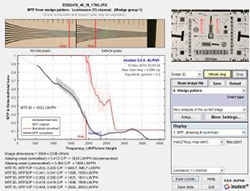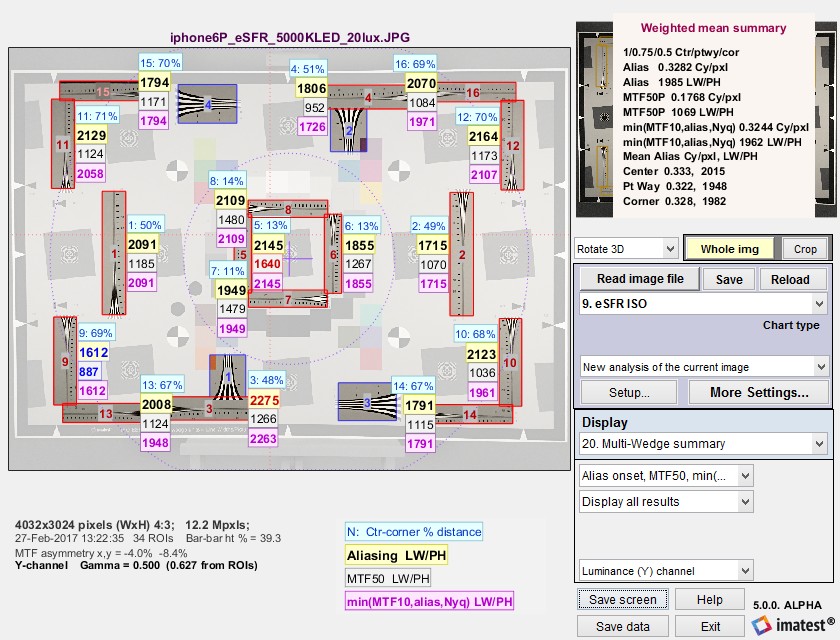
This paper was given as part of the Electronic Imaging 2017 Autonomous Vehicles and Machine session.
When: Monday, January 30, 2017, at 10:10 am
By: Norman Koren with support from Henry Koren, Robert Sumner
Abstract: The ISO 16505 standard for automotive Camera Monitor Systems uses high contrast hyperbolic wedges instead of slanted-edges to measure system resolution, defined as MTF10 (the spatial frequency where MTF = 10% of its low frequency value). Wedges were chosen based on the claim that slanted-edges are sensitive to signal processing. While this is indeed the case, we have found that wedges are also highly sensitive and present a number of measurement challenges: Sub-pixel location variations cause unavoidable inconsistencies; wedge saturation makes results more stable at the expense of accuracy; MTF10 can be boosted by sharpening, noise, and other artifacts, and may never be reached. Poor quality images can exhibit high MTF10. We show that the onset of aliasing is a more stable performance indicator, and we discuss methods of getting the most accurate results from wedges as well as misunderstandings about low contrast slanted-edges, which correlate better with system performance and are more representative of objects of interest in automotive and security imaging.
Full Text: Measuring MTF with Wedges: Pitfalls and best practices
Slides: Wedge_measurements_N_Koren_2017
Imatest upgrades based on the paper
The recommended metric to replace MTF10 (min [MTF10, onset of aliasing, Nyquist frequency]) is displayed in the Wedge MTF plot as well as the (new in Imatest 5.0) Multi-Wedge plot, shown below.
 Multi-Wedge plot for eSFR ISO, including recommended metric.
Multi-Wedge plot for eSFR ISO, including recommended metric.

